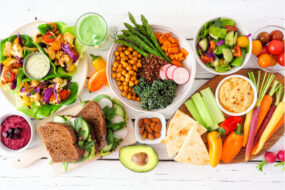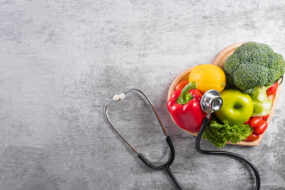
Table of Contents
A Consistent Carbohydrate Diet For Type 2 Diabetes
A consistent carbohydrate diet is easier to stick to than it sounds. Instead of counting carbohydrates one by one, limit your intake of processed foods. While fruit is naturally sweet, processed foods often contain added fat, sugar, or preservatives. Fruits are also high in fiber and good sources of antioxidants. Besides, eating the same kinds of foods on a consistent basis can streamline your eating process. And, what's better than fruits?
Fruit is naturally sweet
People with type 2 diabetes need a constant supply of carbohydrates for energy. However, too much of it can cause problems. Fortunately, there is a solution: a consistent carbohydrate diet. A consistent carbohydrate diet, also known as a constant or controlled carbohydrate diet, requires that you eat the same amount of carbohydrates each day. This way, your blood sugar will remain stable. Carbohydrates come in two forms: naturally occurring sugar and processed white table sugar.
While fruit is not exactly low in sugar, it does have high nutritional value and a healthy amount of phytonutrients. A typical fruit contains approximately 11 grams of sugar per cup. Nevertheless, many consumers choose to limit their fruit intake for health reasons. Here are a few fruits that are low in sugar and high in antioxidants and fiber:
Most fruits have a low to moderate-glycemic index, which determines the speed at which they increase blood sugar. However, there are tropical fruits that are high in quick-release carbohydrates and should be avoided by people with diabetes. Fruit juices, dried fruits, and canned fruit should be eaten in moderation. A consistent carbohydrate diet requires careful monitoring of portions, carbohydrates, and other factors.
Although the natural sugars found in fruit can be confusing for people with diabetes, they do not have the same effect on blood sugar as other carbohydrates. They affect the blood sugar levels differently based on their glycemic index and glycemic load. By making smart food choices and monitoring your carbohydrate intake, you can avoid the problems associated with diabetes. You can enjoy delicious, natural foods, and stay healthy.
Processed foods contain added salt, sugar, fat or preservatives
Almost all food is processed. Even dried beans are processed to extend their shelf life. The term “processed” has become an infamous black mark in the world of health and fitness for the health conscious. But does the term really mean that processed foods are unhealthy? Most people find it difficult to define this word, which is why understanding the definition is crucial to making wise food choices.
In addition to being unhealthy, processed food also contains high levels of added salt, sugar, fat, and other additives that make them taste and look better. Added sugar and salt can raise your risk of heart disease, high blood pressure, and type 2 diabetes. But these additives do not necessarily make a food unhealthy – they simply alter the original food. Listed below are some of the most common types of processed food.
Foods that are heavily processed contain salt, sugar, and other additives that have little or no nutritional value. Even foods that are labeled “healthy” can contain high levels of added salt, sugar, fat, or preservatives. The FDA does not strictly police food labels, so you have to look for these in addition to their nutritional value. Processed foods may also contain added sugar or fat, but these additives are largely unnecessary and can be found in small amounts.
Other foods that are heavily processed include deli meat, crackers, frozen meals, and chips. In general, processed foods are those that contain added fat, sugar, and preservatives. These ingredients can lead to an array of chronic conditions and health problems. But, fortunately, they aren't all harmful. Many people are able to live healthy lives by avoiding foods that are heavily processed.
Limiting carbohydrate-rich foods is easier than counting individual carbs
One way to keep track of your carbohydrates is to check food labels. While reading food labels may be difficult, there are apps that can help. If there isn't a food label, you can find the carb content of foods by looking up their nutritional information on websites. In addition, you can use the Food Composition Database of the U.S. Department of Agriculture to get nutrition information on thousands of foods. Once you get into the habit of counting carbs, it will become much easier to remember how many carbohydrates are in common foods.
If you exercise, you should calculate how many grams of carbohydrates you need to consume. To do this, divide your body weight in pounds by 2.2, and then multiply by the number of carbs per kilogram of your body. Using this amount, you can figure out how many carbs are needed for an hour of moderate exercise. You can even make it easier on yourself by substituting liquid vegetable oils for butter or margarine.
In addition to limiting the amount of processed, refined carbohydrates, and starchy vegetables, you should also watch your portion size. Starchy vegetables are often higher in carbohydrates than green vegetables, but they contain less than white bread. These foods should be eaten in smaller portions and with additional insulin. This way, you can avoid excess carbohydrate intake and lower blood sugar levels.
It's also important to keep in mind that simple carbohydrates are not bad. Many fruits and dairy products contain complex carbohydrates, which take longer to break down. In turn, your body will have more time to process them, releasing glucose more steadily. In addition, they have better nutritional value than simple carbohydrates. And because they are a good source of energy, you can count on them in moderation.
Fruits with low carbohydrate content are good sources of fiber
Many fruits are relatively low in carbohydrates, and they can be a valuable part of a low-carbohydrate diet, as long as you know what you're eating. Carbohydrates in fruits include glucose, fructose, and sucrose, and our bodies use them as the default energy source for our cells. Because fructose is different from glucose, it's important to understand how these carbohydrates are processed by the body.
High-fiber foods may reduce blood pressure, increase good cholesterol, increase metabolism, reduce belly fat, and contribute to a healthy diet. Fiber-rich foods also provide the daily nutrition needs that your body needs, including soluble and insoluble fiber. Many low-carb dieters struggle with the lack of fiber, which may contribute to constipation and digestive issues.
Other sources of fiber are fruits and vegetables. Most fruits contain less than one gram of carbohydrates per serving. High-fiber cereals can be consumed in moderation. Cooked spinach and chard contain about two grams of usable fiber per cup. Unsweetened coconut flour contain approximately two grams of carbohydrates per serving. While fruits with low carbohydrate content may be hard to find, they're often a healthy addition to any diet.
Watermelon contains 5.5g of carbohydrates per 100 g. It's low in calories and contains significant amounts of vitamin C and potassium. Its rind contains a number of beneficial compounds that help prevent cancer. In addition to fruits, vegetables are also good sources of fiber and have low sugar content. For example, orange melon contains only eight grams of carbohydrates per 100 grams, but its rind is highly nutritious.
Meals that are high in protein and fat are better
Carbohydrates can be helpful or harmful, depending on when you eat them. Registered dietitian Kate Patton explains when carbs are best for your diet. Carbs are one of the three main macronutrients, along with fat and protein. Choose whole-grain options whenever possible and include legumes and fruits. You can also find healthy protein sources in plant foods.
To get enough protein, eat a variety of lean proteins. Eggs, meat, and poultry are all good sources of protein. Red meat and poultry are complete proteins, and contain all nine essential amino acids. You can also include fish, eggs, and nuts in your diet. Eating these food groups at regular intervals is a good way to stay consistent with your carbohydrate intake.
A low-fat, high-protein, and average-protein diet decreased fasting serum insulin levels by six to 12%. Blood pressure levels decreased by one to two mmHg, but these changes were not statistically significant. The changes in risk factors in the high-fat, low-protein, and average-protein groups were smaller than in the intention-to-treat population and were calculated over a two-year period.
To calculate the carbs in your food, check the nutrition facts label. You can also use apps to find out the carb content of foods you're buying. Another good source of carb information is the Food Composition Database maintained by the U.S. Department of Agriculture. You can search for the composition of foods by brand name or generically. These free micro-lessons offer wisdom on making healthy changes.
To be successful on a low-carbohydrate, high-protein diet, you must have specific calorie goals. For example, an adult male might set a goal of 1,600 calories a day. This goal may be challenging but achievable. However, high-protein meals will keep you fuller longer and minimize between-meal grazing. The reason for this is that protein is an important part of your diet.










